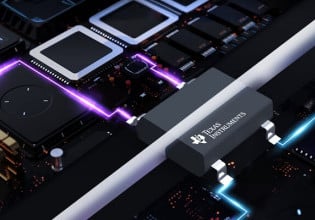Researchers Look Toward a new Technique to Make Batteries More Controllable
Cornell University researchers develop a technique to make aluminum-anode batteries more controllable and affordable.
A group of researchers from Cornell University have found a solution where the possibility of Al-Anode batteries become an alternative for other battery technologies. The research was originally published in Nature.
The research was published by 13 authors and led by Jingxu (Kent) Zheng, Ph.D. ’20, currently a postdoctoral researcher at the Massachusetts Institute of Technology. Other co-authors are David C. Bock, Tian Tang, Qing Zhao, Jiefu Yin, Killian R. Tallman, Garrett Wheeler, Xiaotun Liu, Yue Deng, Shuo Jin, Amy C. Marschilok, Esther S. Takeuchi, Kenneth J. Takeuchi, and Lynden A. Archer.
Affordable and Eco-Friendly
Compared with Lithium, Aluminum is available in the earth’s crust with an abundance of 8%, whereas Lithium is available at 0.002% to 0.006% of the earth’s crust. The wider availability of Aluminum makes it more affordable than lithium.
Aluminum is known to be a sustainable metal. The energy needed to recycle Aluminum is almost 10% of the total energy needed to make the same amount of new aluminum. On the contrary, Lithium recycling is available but also has a very hard process. Therefore, only a few specialized recycling centers recycle lithium batteries.
“A very interesting feature of this battery is that only two elements are used for the anode and the cathode – aluminum and carbon – both of which are inexpensive and environmentally friendly,” Jingxu (Kent) Zheng said.
An Overview of Previous Al-Anode Battery Research
According to the article, several research papers provided promising electrochemical deposition properties of Al-anode batteries.
The requirement of an Al-Anode battery to be practical is a coulomb efficiency, expressed as CE, of 99% or more. In previous research, the maximum coulomb efficiency was equal to 85%. This result means that 15% of the Al deposits could not be used in another charging/discharging cycle.
Note that for CE measurement, an amount of the electrode, i.e Aluminum, is plated on a substrate, i.e stainless steel, then a reverse voltage is applied to strip the plated materials off the substrate into the source electrode. CE= [(Stripping Capcity)/(Plating Capacity on the Substrate)]x100.
The New Al-Anode Battery Solution
The materials used for the new battery convention are aluminum and carbon, a substrate of interwoven carbon fibers. The Aluminum is more likely to form rigid covalent bonds with this substrate. Therefore, being deposited on it.
Scanning electron microscopy (SEM) and energy discharge spectroscopy (EDS) were used to diagnose problems within conventional Al-Anode Battery. According to the research, Al deposits exhibit a non-planar morphology. Therefore, even when multiple layers of separator membrane are used, the cells are short-circuited in a small duration.
This magnified image shows aluminum deposited on carbon fibers in a battery electrode. The chemical bond makes the electrode thicker and its kinetics faster, resulting in a rechargeable battery that is safer, less expensive and more sustainable than lithium-ion batteries. Image courtesy of Cornell University
To solve this problem the researchers used an interfacial metal substrate bonding technique. The use of this technique with carbon fiber substrates increased the reversibility up to 99.4–99.8% stripped morphology.
According to the authors, some results showed that the cells maintain stable operations for more than 2,000 hours.
The researchers worked through the Cornell Center for Materials Research. This research was supported by the U.S. Department of Energy Basic Energy Sciences Program.







Fruitful article
Thanks
WoW!! Explained Well